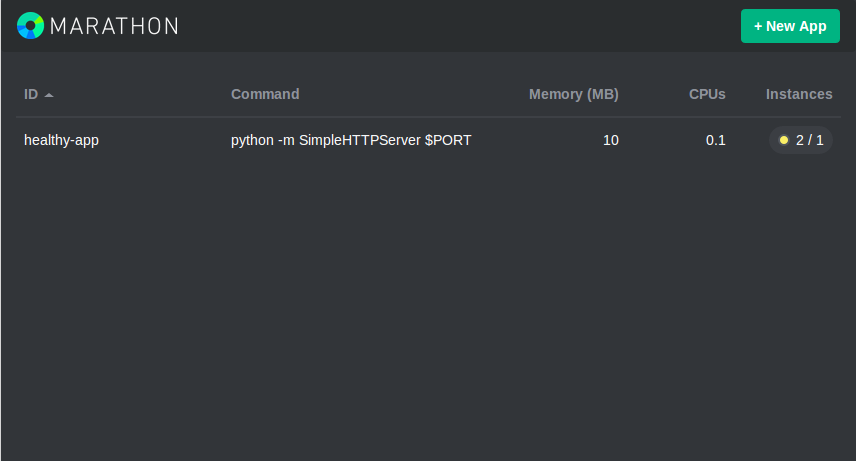Two of the more talked about frameworks today are Google’s AngularJS and Facebook/Instagram’s React, but there are limited comparisons between them. TodoMVC is a project which aims to provide a comparison of JavaScript frameworks by implementing a todo list in the most popular frameworks. I have a little experience with Angular and none with React. I looked at both the Angular TodoMVC app and the React TodoMVC app to try to compare them and was very intimidated that the React one took twice as many lines. In this blog post, I’ll aim to break down the code differences between the AngularJS and React versions and try to decide whether React really is much more verbose and cumbersome to write or if there was some difference in implementation and coding style between the two which had a larger affect.
One thing TodoMVC does is allow the user to type onto the list, and if the user hits enter, it moves the current item down and creates a new empty space for a new item.
Here’s the React version for creating a new item:
handleNewTodoKeyDown: function (event) {
if (event.which !== ENTER_KEY) {
return;
}
var val = this.refs.newField.getDOMNode().value.trim();
if (val) {
var newTodo = {
id: Utils.uuid(),
title: val,
completed: false
};
this.setState({todos: this.state.todos.concat([newTodo])});
this.refs.newField.getDOMNode().value = '';
}
return false;
},
Here’s the Angular version:
$scope.addTodo = function () {
var newTodo = $scope.newTodo.trim();
if (!newTodo.length) {
return;
}
todos.push({
title: newTodo,
completed: false
});
$scope.newTodo = '';
};
Much of the extra code in React is because it is listening for a key and then deciding if it was the enter key whereas Angular was simply listening for a submit. This seems likely to be not related to the framework, but merely a difference in implementation in this case.
Let’s look at removing an item from the list. This also takes additional lines in React:
destroy: function (todo) {
var newTodos = this.state.todos.filter(function (candidate) {
return candidate.id !== todo.id;
});
this.setState({todos: newTodos});
},
And here’s the Angular version:
$scope.removeTodo = function (todo) {
todos.splice(todos.indexOf(todo), 1);
};
The big difference here is that React creates a new array whereas Angular alters the existing array. I’m not familiar enough with React at this point to know if there’s a requirement to avoid mutating the data structures. However, it’s important to note that the implementation here in React does not work in IE8 because of the use of Array.filter. Throughout the code base, it is a very common theme that much of the extra code results from the React implementation using immutable data structures.
The React also has some extra code for performance improvements. It has included a shouldComponentUpdate method as an example of how performance improvements can be made with React. This is method is not necessary and is used to demonstrate how you could make such an improvement.
/**
* This is a completely optional performance enhancement that you can implement
* on any React component. If you were to delete this method the app would still
* work correctly (and still be very performant!), we just use it as an example
* of how little code it takes to get an order of magnitude performance improvement.
*/
shouldComponentUpdate: function (nextProps, nextState) {
return (
nextProps.todo.id !== this.props.todo.id ||
nextProps.todo !== this.props.todo ||
nextProps.editing !== this.props.editing ||
nextState.editText !== this.state.editText
);
},
However, this creates extra code besides just this method. The React version also tracks whether the user is in an “editing” state, which is something Angular does not have any code devoted to and which is only ever used in the shouldComponentUpdate function. This means we need a cancel function and about half a dozen other places to track state that are not present in the Angular version.
cancel: function () {
this.setState({editing: null});
},
Some extra code in React is needed in order to show optional components because it requires making an extra variable which sometimes has its value set:
var footer = null;
if (activeTodoCount || completedCount) {
footer =
<TodoFooter
count={activeTodoCount}
completedCount={completedCount}
nowShowing={this.state.nowShowing}
onClearCompleted={this.clearCompleted}
/>;
}
In Angular, no extra extra lines are required to show an optional attribute and instead you simply use ng-show or ng-if:
<footer id="footer" ng-show="todos.length" ng-cloak>
Similarly, switching between all, completed, and active todos is quite cumbersome in React:
var shownTodos = this.state.todos.filter(function (todo) {
switch (this.state.nowShowing) {
case ACTIVE_TODOS:
return !todo.completed;
case COMPLETED_TODOS:
return todo.completed;
default:
return true;
}
}, this);
That took 10 extra lines for something that takes no extra lines in Angular:
<li ng-repeat="todo in todos | filter:statusFilter track by $index" ng-class="{completed: todo.completed, editing: todo == editedTodo}">
A big portion of the extra lines in the React example are also due to coding style. HTML elements which would more typically be placed on a single line have been split between several in the React example:
<input
id="toggle-all"
type="checkbox"
onChange={this.toggleAll}
checked={activeTodoCount === 0}
/>
Here’s that same code in the Angular example:
<input id="toggle-all" type="checkbox" ng-model="allChecked" ng-click="markAll(allChecked)">
Most of these difference are just implementation or style differences. I think it’s nice to show each example using the idioms of that framework. It may also be nice for TodoMVC to make some basic guidelines so that apps get implemented analogously (e.g. whether to use a submit listener or keypress listener to determine item completion). The one thing that I think would be really annoying is the manner in which React handles if statements in templates vs. the way that this is done in Angular which is much less verbose. I’m also curious about the React implementation’s aversion to mutating state, which seems quite unique to that framework.












